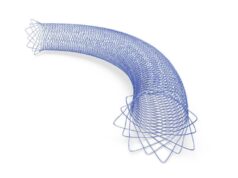
A meta-analysis published recently in the Journal of the Neurological Sciences has concluded that venous sinus stenting (VSS) appears to be a safe and effective treatment option in certain idiopathic intracranial hypertension (IIH) patients—specifically, those who do not respond to medical therapy or have significant visual symptoms.
“Patients showed significant improvement in IIH symptoms post-VSS, with 79% experiencing reduced headaches, 89% improvement in papilloedema, and 88% relief in diplopia or visual disturbances,” write corresponding author Ahmed Azzam (Albert Einstein College of Medicine, New York, USA) and colleagues. “VSS demonstrated a promising potential as a minimally invasive treatment for IIH, especially in patients who did not respond to medical therapy or had significant visual symptoms. It significantly reduced symptoms with a relatively low complication rate.”
The researchers also report that, post-VSS, they observed a “significant reduction” in the trans-stenotic gradient pressure and the lumbar puncture cerebrospinal fluid opening pressure—both of which are indicative of the effective alleviation of intracranial pressure. In addition, their analysis found a major complication rate of 3.93% and a minor complication rate of 2.72% post-VSS, indicating that the procedure is “relatively safe with manageable risks”.
In light of the fact that the safety and effectiveness of VSS to treat IIH remains somewhat “controversial”, Azzam and colleagues conducted a systematic review and meta-analysis following Preferred reporting items for systematic reviews and meta-analyses (PRISMA) guidelines that involved searching multiple databases for studies evaluating the use of VSS for this condition, and pooling the subsequent data.
A total of 36 studies involving 1,066 patients who underwent VSS were included in the researchers’ final analysis. In addition to the aforementioned improvements regarding headaches, papilloedema and visual disturbances, Azzam and colleagues report a 95% rate of improvement in tinnitus symptoms as well. However, they continue, some 13.7% of patients experienced either treatment failure or complications, with 8.35% of this accounting for treatment failure characterised by worsening symptoms and IIH recurrence. The authors further note an overall complication rate of 5.35%, with these complications including subdural haemorrhage, urinary tract infection, and stent thrombus formation, among others.
Azzam and colleagues conclude that, while their findings suggest VSS constitutes a safe and effective option in the treatment of IIH patients who are unresponsive to medical therapy or have significant visual symptoms, the long-term outcomes and safety relating to the procedure “require further investigation”.









